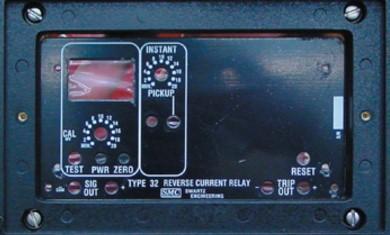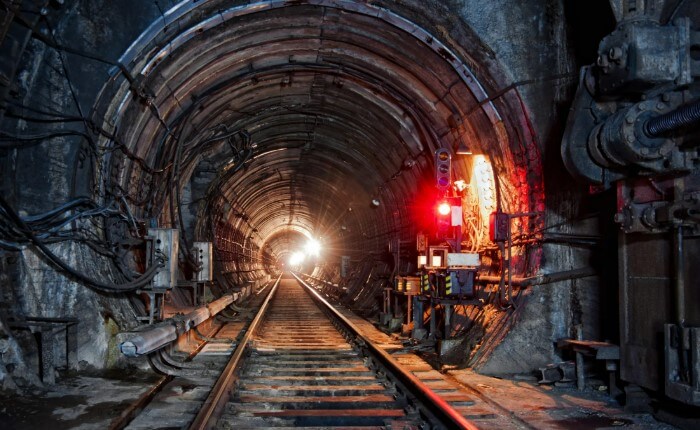
Rail systems are undemanding yet powerful machines, and embedded deep within their intricate electrical networks is a silent guardian: the Reverse Current Relay. This often-overlooked component plays a critical role in preserving safety, reliability, and operational efficiency. Swartz Engineering, a trusted name in the locomotive systems industry, offers its expertise with the Type 32 Reverse Current Relay—a cornerstone of modern rail safety architecture.
What Is a Reverse Current Relay?
A Reverse Current Relay is a protective device used in DC power distribution networks of rail systems. Its main job is simple, but essential: detect any reverse flow of current—i.e., when electricity begins to flow in the wrong direction—and immediately disconnect the power supply to prevent damage to equipment or unintended operation. Think of it as an electrical guard dog, always watching to ensure current goes precisely where it’s supposed to.
Why Reverse Current Happens in Rail Systems
Several scenarios can lead to reverse current in rail systems:
- Regenerative braking: Trains may feed power back into the DC feeder. Without proper control, that power could flow backward through substations or feed into other trains.
- Fault conditions: An unintended path in the system can form, causing reverse flow that may damage components or create unsafe conditions.
- Switchgear or shunt operations: Manual or automatic switching between power sources may inadvertently reverse the flow during transition.
In each case, backup, safety, or isolation mechanisms must act quickly—and that’s where the Reverse Current Relay shines.

GET IN TOUCH
In a hurry? Call us at 276-285-3841
Swartz Engineering’s Type 32: Inside the Relay
Swartz Engineering’s Type 32 Reverse Current Relay is a robust and field-tunable device, designed especially for locomotive and rail substation environments.
Key features include:
- Isolated current monitoring: Works with either positive or negative conductors in DC distribution
- Precision calibration: Front-panel millivolt-adjusted settings (0–20 mV) allow users to set the exact trip threshold against shunt signals
- Onboard test capability: A built-in “TEST” button and analog SIG OUT jacks make field validation quick and easy
- Digital display: Millivolt meter shows real-time shunt voltage, giving transparent monitoring
- LED indicators: Green indicates power/normal, while red indicates an active reverse-current trip—easy, visual status checks.
Optional features include event trip logging and isolated trip outputs for interfacing with external relays or SCADA systems. This adds another layer of operational context and system integration.
How It Works
Here’s a step-by-step look at the relay in action:
- Sensing
The device monitors voltage across a shunt—small resistors installed in DC feeders. Reverse current creates a millivolt signal across the shunt. - Detection & Calibration
The relay compares the shunt voltage to the calibrated trip threshold, which is user-adjustable between 0–20 mV. - Trip Triggering
Once the threshold is exceeded, the relay’s internal trip logic deactivates a key output signal, resulting in disconnection. - Protection & Feedback
Visual LEDs light up red, the digital meter shows the actual reverse voltage, and SIG OUT provides analog feedback. This combination ensures operators quickly detect and respond. - System Reset
After clearing the event, operators can reset the system manually or allow the system to reset automatically, depending on the configuration.
Thanks to its fail-safe design, the Type 32 avoids nuisance operation and will default to a safe offline state on power loss or internal failure.
Real-World Applications
a) Locomotive Power Systems
When regenerative braking occurs, trains can send power backward into DC bus systems. Installing a Reverse Current Relay ensures those currents won’t travel upstream into substations or other equipment unsupervised.
b) DC Substations
Swartz relays protect substations by isolating reverse currents from feeders, preserving the health of converters, transformers, and power electronics.
c) Yard & Maintenance Operations
Rail yards often have complex switchgear and battery-fed equipment. Reverse current protection helps prevent accidental power flow, enhancing safety and protecting battery banks.
d) Redundancy Schemes
In setups with multiple power feeds (e.g., substation A and substation B), a Reverse Current Relay ensures power from one direction doesn’t back-feed the other, avoiding potential synchronization issues or damage.
Complementary Protection Strategies
While a Reverse Current Relay is vital, it should operate with complementary systems to form a full protection suite:
- Overcurrent Relays: Protect against excessive forward or reverse current levels.
- Impedance Bonds (for track circuits): Maintain track signaling while handling high return currents
- Double-switching: Switch both positive and negative conductors of critical circuits
- Snubbers & Flyback Diodes: Prevent voltage spikes when switching inductive loads like coils
Together, these elements form a unified, fail-safe system that protects both capital equipment and operational processes.
The Swartz Edge
What makes Swartz Engineering’s offering stand out?
- Field-adjustable precision: Millivolt-level control over trip thresholds.
- Built-in diagnostics: Instant visual and output feedback spares time-consuming troubleshooting.
- Modular integration: Digital, analog, and event outputs neatly tie into SCADA or logging systems.
- Fail-safe performance: Designed to default safely in power failures or wiring issues.
- Compact, durable design: Ideal for the harsh environments of rail and locomotive systems.
Each Type 32 Reverse Current Relay comes meticulously calibrated and ready for installation.

GET IN TOUCH
In a hurry? Call us at 276-285-3841
Installation & Best Practices
To get the Reverse Current Relay working optimally:
- Shunt accuracy: Choose shunts sized to your current ranges to ensure accurate millivolt output.
- Threshold planning: Set trip points above transient noise but below damaging reverse currents.
- Wiring discipline: Tight, shielded wiring minimizes false triggers.
- Routine testing: Use the built-in TEST pushbutton quarterly within inspection cycles.
- Integrate with systems: Connect trip outputs to logs, alarms, or SCADA for swift action and analysis.
Why It Matters
In summary, across rail systems—whether on moving trains, in substations, or inside switchyards—the Reverse Current Relay plays a vital role by:
- Saving equipment from reverse-energy damage
- Boosting safety by preventing unintended power flow
- Supporting regenerative braking efficiently
- Reducing downtime through instant diagnostics
- Complementing other protective strategies for full-system security
Swartz Engineering’s Type 32 embodies reliability and precision. As part of any robust rail electrical infrastructure, it's more than just a relay—it’s a strategic investment in longevity, efficiency, and safe operations.
Conclusion
As rail systems evolve—embracing greener traction, automation, and smarter energy use—protection components like the Reverse Current Relay are becoming more critical. Swartz Engineering continues innovating in this space, equipping operators with trusted solutions.
If you’re implementing regenerative braking, overhauling DC networks, or enhancing yard safety, the Type 32 Reverse Current Relay is designed precisely for these challenges. For configurations, datasheets, or system integration advice, reach out to us at Swartz Engineering. Our mission: to equip rail systems with smarter, safer, and more efficient technologies.
Our Expert Services
Swartz Engineering provides top-quality products to meet our customers' needs. We also make sure our products work reliably and safely. Our products include:
- Type 76 DC Relay
- Type 82 DC Relay
- Swartz Engineering’s Type 64 Ground Relay
- Type 32 Reverse Current Relay
- Type 150 DC
- CSM Shield Monitor
- Metal Oxide Surge Arrestors
- Transducers
- MVIS SL Slim-line Contactor
- Fully-tested Power Control Rooms
- Swartz Engineering’s Portable Substations
